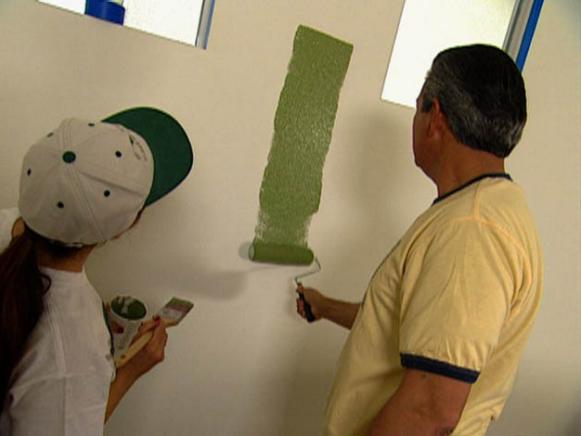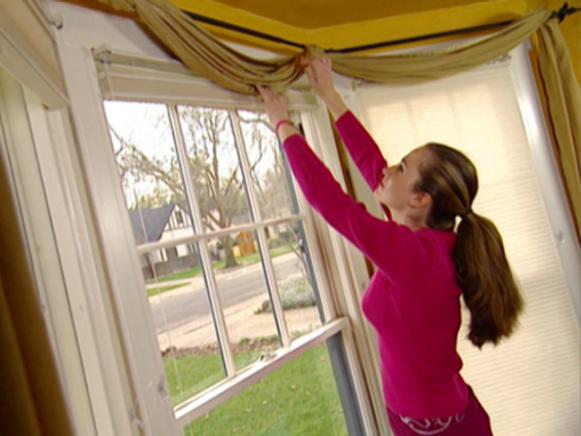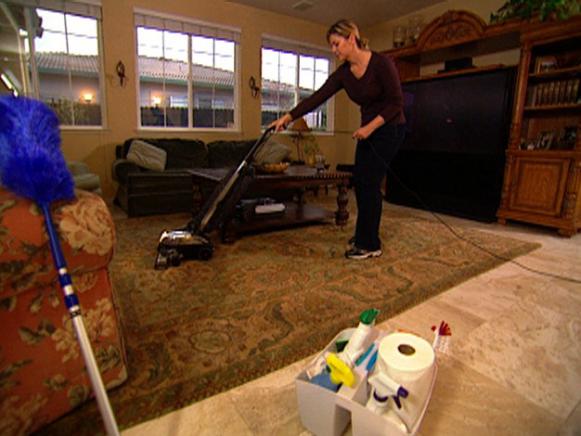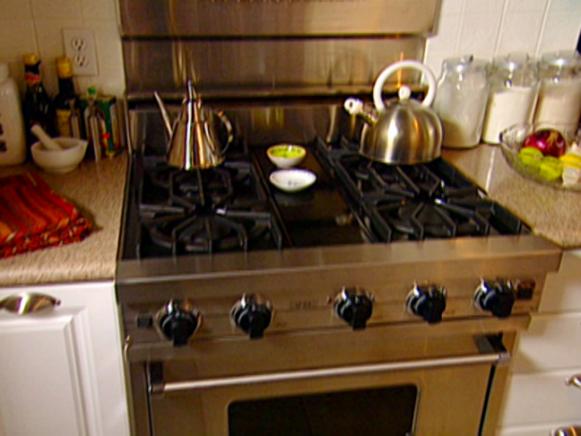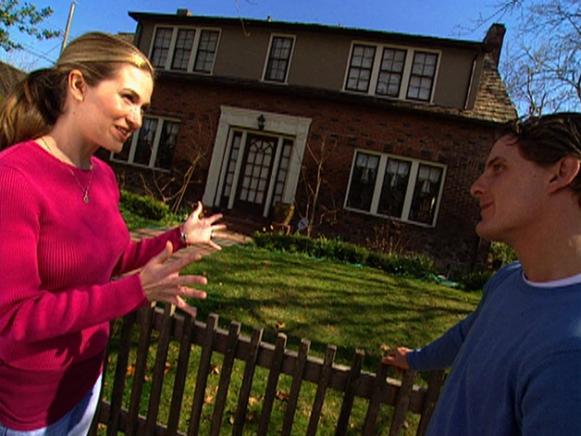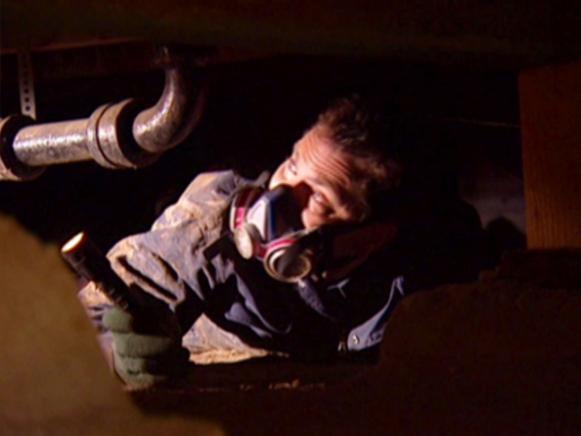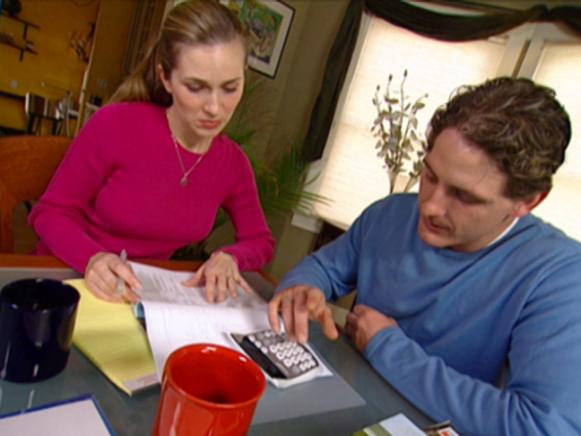10 TIPS TO INCREASE YOUR HOME’S VALUE
August 16, 2016
Plan your remodel.
Whether you just bought a house or you have lived there for a while, the fastest way to increase your home’s value is by making a plan.
You will fare better if upgrades are made intentionally and not on impulse. Home improvement projects cost about 20 to 25 cents on the dollar. The other 75 to 80 cents spent go directly back into the home through increased value.
Start slowly. It’s a marathon, not a sprint. If your home is new, get to know it. If you have already been there a while, get started. List the things you want to change and the updates you would like to make. Don’t worry about organization, just write it all down. Take a guess on how long you may want to live in the house. If you’re planning on selling, talk to your realtor and make a selling plan.
Take the list and categorize by how much it may cost, including your time and money. Be realistic. It’s OK to list an outdoor pool with a waterfall, but keep your financial picture in mind.
Once you have a categorized list, take a look and prioritize what is a real “must have” and what is more of a dream. See if you can come away with a reasonable balance.
Once you have made a plan, do research or talk to a realtor to see what sort of return those improvements may bring. Some improvements will add considerably more value to your home than others.
Tackle one room at a time.
How can you harness the energy that comes from new ideas and still be smart when you make those improvements? Make the commitment to tackle one room at a time. Whether it’s a simple coat of paint or knocking down a wall, by tackling one room at a time you keep projects achievable.
Make a list of all the things you dream about doing, break your list down into categories based on cost and write down how much time each project may take. What this does is help you get results. If you only have a day or a weekend, choose a project that fits within your timeframe, comfort level and financial commitment.
If you set out to paint a living room wall on Saturday and you know what it will cost in time and money, it gets done. By the end of the day, you have a stylish upgrade that will add value to your home. By strategizing, you will see your dreams take shape as you transform each room before moving on to the next.
Small improvements can really pay off.
Are you torn between improving your home’s decor, versus making upgrades you know will increase your home’s resale value? Many homeowners are surprised to hear that doing a little bit of both will actually pay off.
Start by making two lists — upgrades for your home value and upgrades just for you. Upgrades for your home may consist of replacing old faucets, permanent lighting and doors. Upgrades for you are furniture, artwork and window treatments. Gone is the dartboard approach to picking projects and wondering if what you are doing is really making a difference. With this plan, you will see real progress.
If you have spent a bundle on making an upgrade you can make small changes for the next couple of months. Upgrade a couple of electric plugs or buy a small lamp. Stick to one upgrade per month and you will be happy with what you see.
Clean your house now for profits later.
If your house is on the market, a bright and sparkly home can attract buyers like a magnet. A house can never be too clean. If you were a buyer, would you choose the house that is slightly dingy or the home down the street that is clean and welcoming?
By making a clean house a priority, you do several things at once. First, you stay on top of maintenance issues, spotting potential problems before they become expensive ones. Secondly, you don’t allow dirt and junk to build up over time. Things like mold can become a nuisance if allowed to spread unchecked. Finally, a clean house is healthier for you and your family.
Remember, de-cluttering is a form of cleaning. Just as dirt builds up, so does clutter. Don’t waste money moving your junk around. Get rid of it now. When it’s time to sell you will feel confident about what you are presenting to the buyer.
Curb appeal counts.
Want a fresh perspective on the value of your home? Walk across the street, turn around and ask yourself, “Does my house have curb appeal?” Does your home look attractive, welcoming and structurally sound at first glance?
Make a list of ways to enhance the positive and eliminate the negative. If you have a nice curvy walkway, accentuate it with flowers or lanterns. If the first thing a visitor sees is your big wide garage, try to guide their eyes into a beautiful front yard, or paint your front door red to guide the eye there. These things add value.
Take a digital photo and look at your home in black and white. When the color is removed, the truth comes out. That is where you see the cracks in the walls and the glaring flaws.
Keep things clean and tidy. Talk to your neighbors because this affects them too. Curb appeal doesn’t stop at your property line. Your home will be more valuable if you live in a place where everyone pays attention to appearance.
Host a neighborhood cleanup party. Team up with neighbors to mow lawns and trim hedges. See who wants to go in on a few flats of border flowers. By adding curb appeal to your entire neighborhood, you will all boost your home values.
When you’re looking at your curb appeal, don’t forget the side and rear views. Buyers walk around and peek over fences.
Upgrade the kitchen.
Ask any real estate expert what the No. 1 upgrade with the greatest return is, and the answer will be the kitchen.
- Do a mini-remodel. Change the paint. It sounds simple, but it works. You can also paint a faux-wood finish onto your cabinets. This looks just like cherry.
- Add a splash of color with a new backsplash. New tile is attractive. Home improvement stores teach classes on this.
- Go stainless steel. The cold feel of steel is a hot ticket item for buyers. Transition your appliances as they wear out and go with a similar metallic look in your light switches.
- Make your kitchen rock with a rolling island.
- Hang a pot rack with fresh new pots, pans and a hanging wine bottle holder. With the rolling island, your kitchen will catch every buyer’s eye. You can take some of these things with you to your new home.
Beautify your bathroom.
Of all the rooms in your house, the bathroom is the workhorse. There is lots of wear and tear, so you want to keep it functioning well and make good looking upgrades along the way.
- Focus on your faucet. Bathrooms are not utilitarian anymore. People like to feel relaxed, like they are in a spa. Drop-sinks are old news, people want the under-mount sinks.
- Go granite or marble with your countertops. If you are toying with the granite idea, your bathroom counter is most likely smaller than your kitchen counter and less expensive. This is a great place to start your first granite project.
- Nix the overhead lighting in favor of wall mounts to add warmth and value to your bathroom. Make sure that around your mirror you have even lighting with no side shadows.
- Heated floors attract buyers like bees to honey.
- Upgrade your bath area. With an 85 percent return, install a shower with body sprays and stone surround tile. If you are not selling right away, you will feel like you are in a Zen garden every time you step into your bathroom.
- Keep it clean. Dirt and grime can become embedded in bathroom surfaces very quickly. Freshen it up with new grout.
Weigh the benefits of upgrading versus selling.
Should I stay or should I go? It’s a question staring many homeowners in the face. Here is how to tell if there is more value for you in fixing up, or moving on.
First, estimate your costs to buy a new home. Add up the realtor and home selling costs (packing, moving and the new loan financing). Don’t forget hidden items. The buyer may ask you to replace the carpet before you sell. Or, what if you have to replace appliances? Make your best effort to include everything it will cost in time and money to sell your home and buy a new place. Then, estimate what you may get for your house and how much cash you will leave with to put down on a new home.
If you like your neighbors and your school district, consider remodeling. You can get exactly the home you want and you won’t risk any buyer’s remorse. Estimate the cost of making the most crucial renovations needed for you to stay. Decide what you would like to do and go price shopping at your home improvement store. Call contractors and get estimates. This is especially important if you need to add on extra square footage.
Look at what it would cost to move, then what it would cost to remodel. Add in the X-factors such as friends, schools and neighbors. When all is said and done, you may find you get more equity by staying in your home and remodeling.
Hire a certified home inspector.
You go to the doctor for physical exams and take your car in for checkups. Why not do the same for your house? A home inspection can be a valuable thing, whether you are selling or not.
If you are selling, get your own inspector before you put your home on the market. The last thing you want is to have a contract on the table, only to hear the inspector has found dry rot. If you know in advance, you can take care of it. If a home inspection turns out well, it is likely the buyers will feel good about their purchase and not ask for costly fixes or concessions.
Why bother having an inspection if you’re not worried about selling? Keep those records to show buyers you have maintained your house all along. Also, time is on your side. You can fix problems on your terms for far less than you will likely spend if you wait. Think of it like a physical that will only keep your home healthy and more valuable.
If you get a clean bill of health, it helps you make decisions. You can pick your home projects and spend your money with confidence.
Pay down the principal on your loan.
As you make all those home improvements, don’t forget the cash. Your financial strategy can boost your home value in a big way. Many different loan features can be added together to give someone a loan that is comfortable for them; give them an opportunity to do home improvements and to invest in their future.
Don’t overdo your down payment. If you spend all your money in a down payment, you may not have enough to do the improvements you want. The rule of thumb is if you are moving into a fixer upper, go for 10 percent down.Don’t rush into your home loan, as there are dozens of types. The strategy that you develop for the type of loan you want depends on where you see yourself in five or 10 years. Managing your debt payment with an interest-only payment will give you an opportunity to save that money for retirement or save it for a college fund.
Refinancing is a chance to switch up your loan and try something new. Avoid using refinancing as a financial crutch. Are you doing it to lower your interest rate, or are you doing it because you want cash? If you are moving in a year, refinancing probably isn’t a good idea, as it costs between $1,900 and $2,600.
Share this post

Ah, summer is here. The temperatures are soaring, the rain is pounding, and the sun is blazing. It’s important that you take the time to maintain your home this summer and to prepare it for the extreme heat that you could be facing. Check out our ultimate checklist of summer home maintenance tips to help you give your home some TLC. Indoor summer home maintenance: 1. Do a test of your smoke detectors and your carbon monoxide detectors. Replace the batteries if needed. 2. Get your cooling system ready. Consider getting your air-conditioning system serviced. Proper air conditioner maintenance can help your AC last longer and prevent air conditioner fires . This one is especially important for summer home maintenance since you don’t want to be stuck without air conditioning when the temperature starts climbing. 3. Dust the ceiling fan bla des and check that the fan is balanced and working properly. Attach a dryer sheet to a paint roller so you can reach easily and dust away. 5. Clean or replace your showerheads. 6. Clean bathroom drains. 7. Reverse the direction of your ceiling fans. If your fans spin counterclockwise, they’ll push the air straight down to your home will stay nice and cool. To do this, turn off the fan, wait for it to stop, and find the direction switch and check that your fans are spinning counterclockwise. 8. Clean the baseboards of your home. Use a damp cloth and wipe away all the dust and grime. 9. Check your attic and basement. In your attic, look for signs of dampness, mildew, leaks, holes in the roof, and pests. In the basement, check for leaks, pests, mold, and mildew. 10. Clean the vents of your bathroom fans. 11. Clean the dryer vent and exhaust duct. Clean out all of the dust and lint trapped in the vent and exhaust duct. Call in a professional to clean and service your washer and dryer if needed. Clothes dryers can be a fire hazard if they’re not cleaned and maintained. 12. Change the filter in the air conditioner.

If you’re a first-time homebuyer, you may be aware that it’s possible to deduct mortgage interest. But what about the tax impact of buying a house? What are the tax ramifications of the actual transaction? Warm-weather months can be a great time to buy a home. But before you take the plunge for the first time, here are some things you should know about taxes and buying a home. Sales tax? That’s a ‘no’ While the federal government doesn’t have a sales tax, most states do. In fact, Alaska, Delaware, Montana, New Hampshire and Oregon are currently the only states that don’t collect a statewide sales tax. States that do have a statewide sales tax generally tax a range of purchases, and what’s taxed varies from state to state. For example, California taxes retail sales of merchandise in the state, but not tickets to movie theaters or sporting events. While North Carolina’s sales tax doesapply to movie tickets (among other items), it excludes the purchase of lottery tickets. Additionally, counties and cities may charge their own sales taxes. With so many types of purchases subject to sales tax, it may be surprising to learn that when you’re buying a house, some states don’t apply their sales tax to home purchases. However, states can have idiosyncrasies in their tax law. For example, California may charge sales and use tax if you buy a mobile home. So make sure to check your state and local sales taxes to get a better idea of the taxes you may be responsible for. And, depending on the state in which you buy, you may face another kind of purchase-related tax — real estate transfer taxes. Real estate transfer taxes States, counties and municipalities can choose to levy taxes when a piece of real property — like your new home — changes hands, or when recording a mortgage. These taxes are often known as documentary or “stamp” taxes. Many states that charge these taxes base the tax amount on a percentage of the purchase price of the property. Each state and its taxing body have different rules for how their real estate transfer taxes work. Here’s an example of how state and local real estate transfer taxes can affect the ultimate cost of buying a house. Colorado charges a transfer tax of .01%, which means you’ll owe the state a penny per $100 of the purchase price. What’s more, if your new home is in Telluride, Colorado, the town will tack on an extra 3% real estate transfer tax for any home purchase of more than $500. It’s up to the buyer to pay the town’s tax. So if you buy a $500,000 home there, you’ll owe a transfer tax of $5,000 to the state and another $15,000 to the town. What part of your house payment can you deduct?Even states that don’t have sales tax can have real estate transfer taxes. In Delaware, where there’s no state sales tax, real estate transactions can be subject to a transfer tax of 3% of the property value. However, if you’re buying in a county or municipality that has its own real estate transfer tax, the state tax drops to 2.5%. And Delaware state law says the tax will be divided between buyers and sellers equally. So in Delaware, your $500,000 home could come with transfer taxes of $15,000 (if you buy in a city without its own transfer tax) or up to $20,000 in state and local taxes . In either case, you’d split the tax with the seller, so your share as the buyer could range from $7,500 to $10,000, respectively. A lot depends on where you buy On its website, the National Conference of State Legislators provides a list of real estate transfer taxes that shows how widely such costs can vary from state to state. For example, the list shows that 12 states — Alaska, Idaho, Indiana, Louisiana, Mississippi, Missouri, Montana, New Mexico, North Dakota, Texas, Utah and Wyoming — do not currently have real estate transfer taxes. Others charge a single, simple transfer tax — for example, a $2 flat fee in Arizona and a 0.1% mortgage registration tax in Kansas. And others have more complex transfer tax rules. For example, Hawaii’s state conveyance tax increases as the property value increases, with the tax rate starting at 0.1% for properties valued at less than $600,000. New Jersey has multiple fees on top of the state and county fees, including additional fees for properties over a certain dollar amount. Who’s gonna pay for all this? Who’s responsible for transfer taxes when you buy a home? That depends. Some taxing jurisdictions may specify whether the buyer or seller must pay transfer tax, or if both parties in the transaction must share it. Or you may be able to negotiate with the seller to pay transfer taxes as part of the sales contract for your new home. If you end up paying transfer taxes as a buyer, you can’t deduct them from your federal income taxes the way you might deduct property taxes. However, you can include them in your cost basis, which is basically the value of a home for tax purposes. Down the road, if you sell your home, your cost basis will be a factor in figuring out your gain or loss on the sale. Your gain or loss in turn may affect how much (if any) tax you’ll owe on the money you receive from the sale. Now for the good news … Transfer taxes can be a painful part of an already-daunting process, but buying a home can deliver tax benefits as well. Here are some deductions and credits you may qualify for as a homeowner. Mortgage interest deduction If you’ll be taking out a new mortgage to buy a house this year, you might be able to take a mortgage interest deduction on your 2018 federal income tax return provided … You itemize your deductions Your mortgage is for your principal residence or one other qualified residence You paid or accrued the interest during 2018 You used the loan proceeds to buy the home that secured the mortgage Your total mortgage debt (including home equity) was $1 million or less – or $500,000 or less if you were married but filing separate returns If you’re buying your home in 2018 (or later), the maximum amount of mortgage debt for which you can claim an interest deduction is $750,000 if you’re married filing jointly or $375,000 if you’re married filing separately. That means if you’re married filing jointly and your mortgage is for $1 million, you won’t be able to claim a mortgage interest deduction for $250,000 of your principal. State and local property tax deduction Every year, you’ll pay any property taxes on your home to your state and local governments. Whether you pay your property taxes directly or do so through an escrow account with your lender. Beginning with the 2018 tax year, you may be able to deduct up to $10,000 ($5,000 if you’re married filing separately) of your property taxes, plus state and local income taxes combined. Or, you could choose to use sales tax instead of income tax. This is known as the SALT deduction. For example, if you paid $5,000 in property tax and $7,0000 in state and income tax, you can only take a $10,000 deduction toward that total $12,000 cost. Can you defray the loss of SALT deduction? You’ll need to itemize your deductions on Schedule A to take this deduction, and you’ll have to decide which taxes you want to deduct – property and income taxes or property and sales taxes. If you live in a state with high property taxes, your property tax bill could account for all your allowed SALT deduction, leaving you no room to deduct income or sales tax. Or if your property taxes are lower, there may be money left in the deduction limit to deduct some state income or sales taxes as well. Deducting points Buying a house can involve paying “points” — charges you pay to obtain a mortgage. Your lender may also refer to points as loan-origination fees, maximum loan charges, a loan discount or discount points. You may be able to deduct the full amount of points you paid in the same year you paid them if … The mortgage is secured by your main home (your main home is generally defined as where you live most of the time) Paying points is common in the area where the loan was made and you didn’t pay more than the going rate for points in that area You report income the year you receive it and deduct expenses in the year you pay them (known as the cash method of accounting) The points didn’t replace other fees that normally appear separately on a settlement statement, like appraisal fees, title company fees, attorney fees and property taxes The cash you paid at or before closing on your house for costs like a down payment or earnest money, plus any points the seller paid, were at least equal to the points charged (you can’t have borrowed this money) You used the loan to buy or build your main home The lender computed your points as a percentage of your mortgage principal Your settlement statement clearly shows the points charged for the mortgage If you don’t meet all these criteria, you’ll have to deduct your points over the life of the mortgage as prepaid interest. Mortgage interest credit If you’re a homebuyer making a lower annual income, you may be able to qualify for the mortgage interest credit. Before you get a mortgage, contact the state or local government for your area to find out if you can qualify for a Mortgage Credit Certificate. The IRS requires you to have an MCC to be eligible for the credit. If you qualify for an MCC and are eligible for the credit, it’s a dollar-for-dollar reduction in the amount of tax you owe. Your credit will be based on the certificate credit rate on your MCC (10%–50%), and you’ll need to calculate the actual credit amount on Form 8396. Credit Karma Tax® supports this form, and you can e-file it when you file your federal 1040 using the free tax-preparation service. You can still take a mortgage interest deduction if you also qualify for a mortgage interest credit. However, if you itemize your deductions you’ll have to reduce your home mortgage interest deduction by the amount of the mortgage interest credit you claim, even if that amount is partially carried forward. Each state or agency can have different rules for MCCs, so it’s important to find out exactly what the qualifications are for your area. State and local tax breaks Property taxes can be a huge cost of homeownership. States, counties and municipalities may offer tax breaks that can help defray this cost. Eligibility can be based on factors such as income, whether you’re a veteran or a disabled veteran, where you live in the state, or whether you’re retired or disabled. For example, Washington state offers deferral programs for qualifying applicants to help with their property taxes. Homeowners with household disposable income of $57,000 or less may be able to qualify to defer some property tax payment, although they’ll owe interest on the deferred amount. In Georgia, homeowners may be able to get a standard homestead exemption of $2,000 off their county and school taxes ($4,000 if they’re 65 and older), as long as they actually live in their home and it’s their legal residence, subject to some exceptions. Contact your state’s taxing authority or department of revenue to find out about any state or local tax breaks that might be available to you. Bottom line Depending on the state where you’re buying a house, real estate transfer fees can be complicated and costly. You could find yourself wishing your home purchase was subject to something as simple to understand as a basic sales tax. However, tax implications shouldn’t necessarily be the driving factor in any financial decision, including where you live. Fortunately, qualifying for federal-level tax breaks like the mortgage interest deduction can help reduce your tax burden. If you’ll be buying a home this year, be sure to keep all important purchase-related documents organized in one place. Having your home purchase information on hand when it’s time to file your 2018 income taxes in 2019 can help ensure you make the most of every home-related credit or deduction you’re eligible for.

1. Condition Of The House There’s nothing wrong with buying a fixer-upper, but you need to be realistic about the time and money it’ll take to make an ugly duckling shine again. After receiving a thorough inspection by a qualified professional, ask yourself how many of the repairs you can do on your own, and how many would require outside contractors. Get estimates for any major jobs that you would have to pay someone else to do. You’ll want to make sure that you fix all serious issues before anyone moves in, as an unsafe house can lead to grave consequences if tenants become hurt or sick. Calculate how long the repairs should take. If the house needs to be vacant for months while renovations take place, it may not be worth it. After all, there’s nothing more discouraging to landlords than an empty house that isn’t bringing in any income. 2. The 1% Rule Every investor has their own goals when it comes to returns, but most will agree that the income from an investment property needs to abide by the 1% rule. 3. Property Taxes You should always consider property taxes when buying an investment property. High taxes will eat into your profits, while low taxes will allow you to keep a larger amount of your rental income each month. As a general rule, expect to find higher property taxes in metropolitan areas, and lower taxes in more rural places. Some locations charge investors at a higher rate than owner-occupants, so it’s worth calling your local tax assessor to determine whether this is the case. Be sure to remember that even if you find the perfect house in the perfect neighborhood, high property taxes could make it a poor investment choice. 4. Insurance Costs Just like property taxes, insurance costs can eat into your profits, so be sure to do your due diligence. The first step is to decide what kind of coverage you want for the investment property. Do you want to pay a smaller premium each month but be faced with a higher deductible when you make a claim? Do you want to provide coverage for tenants’ personal property? Secondly, you should determine whether the area you’re interested in has higher insurance premiums due to its vulnerability to floods, sinkholes, tornadoes, hurricanes, earthquakes or other natural disasters. If this is the case, the house may not be worth it. Once you’re ready to proceed, start comparing insurance rates. Many companies offer an online calculator, but calling a customer service number can often allow you to create a more customized policy based on your needs. 5. Neighborhood The location of a house is just as important as the house itself. You need to choose an area wisely, making sure it’s a place where tenants will want to live. The most important factor to consider is safety, making sure the neighborhood’s crime rates are not too high. Curb appeal is also a major factor, as tenants will be more eager to live on a street with well-manicured lawns and nicely painted homes. If you’re hoping to rent to families, you’ll also want to have a look at the local school district. Parents are more likely to choose areas that have well-ranked schools. Buying a home near a university can be an excellent way to enter a strong rental market, although many investors are wary of renting to partying college students. 6. Property Management Being a landlord can be a headache at times, so you should consider whether you’re willing to deal with 3 a.m. phone calls when there’s a plumbing disaster. Many investors choose to hire a property management company to take care of everything for them. Most companies charge around 10% of the monthly rent, as well as a fee for procuring tenants. Some also charge to supervise maintenance repairs from outside vendors. Some landlords believe the management fee is well worth it, while others choose to save money and deal with problems on their own. This decision is purely a personal one, but one you should carefully consider. 7. Unexpected Costs While the primary objective of purchasing an income property is to make money, you should prepare for unexpected expenses. Calculate the amount of money it would take to replace major parts of the house, including the roof, HVAC system and water heater. Throw in a sizable amount of extra cash as a cushion. Always keep that amount of money available, whether on a credit card or in a savings account.


